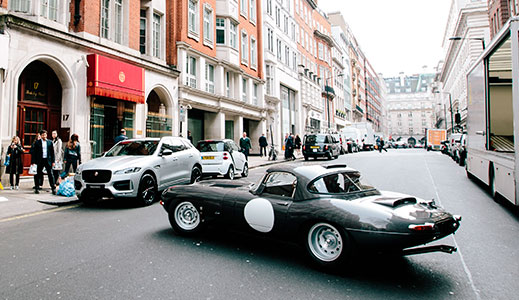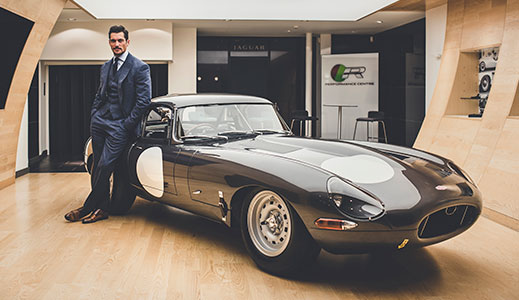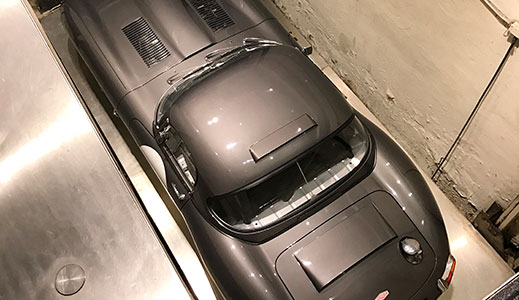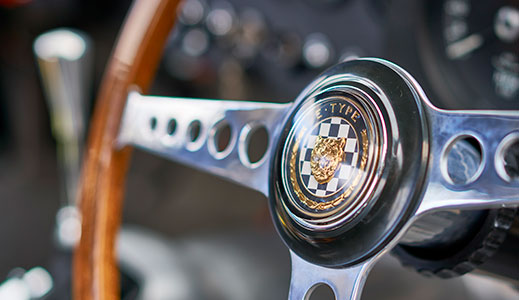Tales of the Past by Former Jaguar Test Driver
Jaguar's former test driver talks about his time developing the technology that made the E-type so distinctive.

When you were developing the C-type, D-type and E-type in the 1950s, did it feel like you were right at the cutting edge of new automotive technology?
Absolutely. At Jaguar, we were always a step ahead of the other manufacturers, and I felt very fortunate to be chief test engineer at the time, with so much responsibility for developing, testing and signing off the cars.
What was it like to be involved in Jaguar's many race wins at the time - including those five wins in the Le Mans 24 Hours?
he biggest joy I got was Le Mans. We drove the three cars to the race, and [Jaguar founder] Sir William Lyons said: "I hope you've done a good job, Dewis. Do you think we'll win?" I said we knew the cars were capable of dong it, but the one thing we couldn't test was the drivers. Lyons replied: "I'll need to have a good talk to the drivers, then." I was reserve driver, going out to do a few miles in practice, and it was great to see the Jaguars come past at 4pm on Sunday afternoon, having won. I was so proud to say, with our small team, we'd done this. Then the 'old man' would say: "Good job, Dewis. Knew we'd do it."
Was it a challenge to take the race technology from the C-type and D-type into the road-going E-type?
Everything we raced was designed with the intention of making it to production for road-going cars. Everything was worthwhile; nothing was wasted. So, by the time we launched the E-type, my development time was cut in half, because I'd already done all the work on its predecessors.
What are your memories of creating the Lightweight E-type?
It started with the racing driver Dick Protheroe. Dick was a big Jaguar fan. He used to come to the factory quite a bit, and he wanted the fixed-head E-type made into a lightweight coupe. Then, John Coombs wanted a car like Protheroe's. Tommy Sopwith wanted one. Roy Salvadori wanted one. It just blossomed from there.
Was it frustrating that the Lightweight E-type didn't have same race success at Le Mans as the C-type and D-type?
The Lightweight E-types probably could have had more success, but they were all raced by private owners. When it's private individuals handling the cars, rather than the factory-backed team, there's no comeback. Jaguar didn't want to go directly back into racing, and they were more than happy to support their customers. But if we'd been responsible for handling the Lightweight E-types as a works team, it possibly could have done much better.
What's it like seeing the Lightweight E-type reborn?
It's great. It's almost 60 years since the E-type first came out, but the car doesn't go out of fashion. Everyone who walks past it, even if they're not car-minded, has to slow down and look at it. It just has that attraction - even now.
Was it also nice to be reunited with C-type MDU 212 today?
I've driven this car so many times at the Goodwood Festival of Speed and Revival for [owner] Richard [Frankel]. It's the car that won the Reims 12 Hours in 1952 - the very first car to win a race with disc brakes. That was a proud moment for all of us at Jaguar.
Discover More

A New Home In Mayfair London
The Jaguar Lightweight E-type arrives at Stratstone's London showroom

David Gandy Visits the E-type
Britain's leading male model talks about his passion for style and cars

Exclusive Appearance in Mayfair
YouTube influencer and car enthusiast Shmee150 visits the Lightweight E-type

